Abstract
Temporal polyethism is a highly derived form of behavioral development displayed by social insects. Hormonal and genetic mechanisms regulating temporal polyethism in worker honey bees have been identified, but the evolution of these mechanisms is not well understood. We performed three experiments with male honey bees (drones) to investigate how mechanisms regulating temporal polyethism may have evolved because, relative to workers, drones display an intriguing combination of similarities and differences in behavioral development. We report that behavioral development in drones is regulated by mechanisms common to workers. In experiment 1, drones treated with the juvenile hormone (JH) analog methoprene started flying at significantly younger ages than did control drones, as is the case for workers. In experiment 2, there was an age-related increase in JH associated with the onset of drone flight, as in workers. In experiment 3, drones derived from workers with fast rates of behavioral development themselves started flying at younger ages than drones derived from workers with slower rates of behavioral development. These results suggest that endocrine and genetic mechanisms associated with temporal polyethism did not evolve strictly within the context of worker social behavior.
Full text
PDF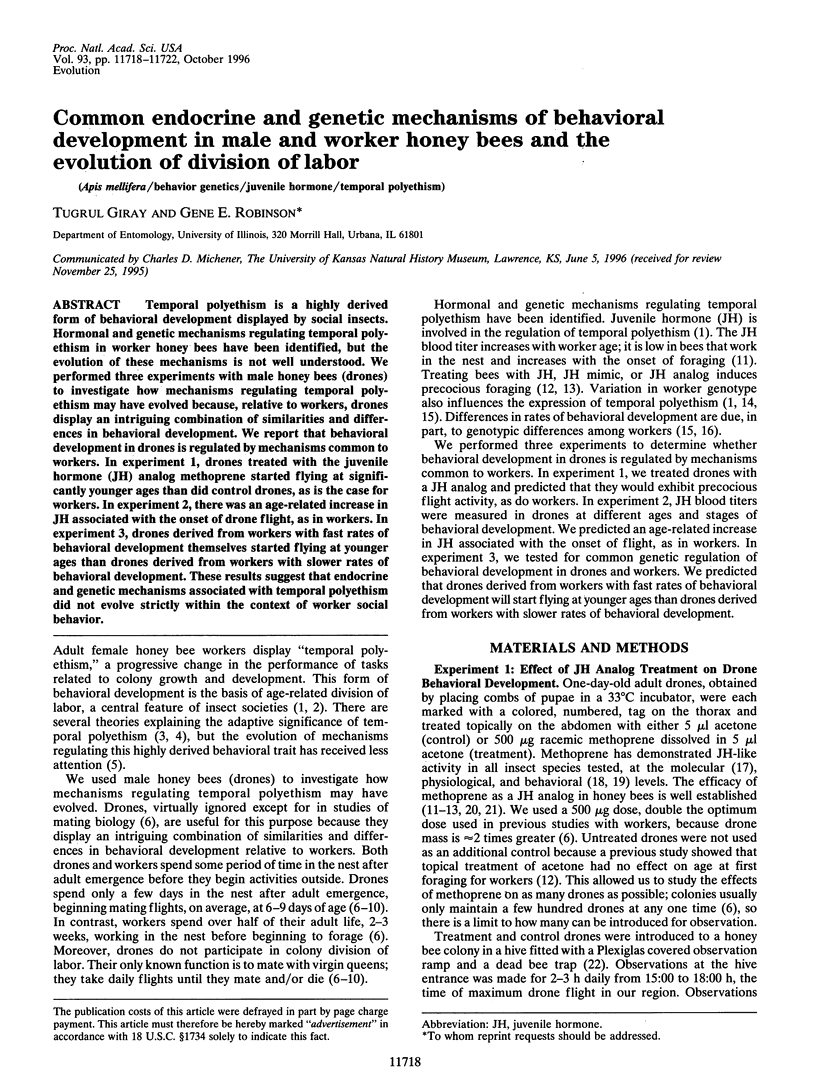
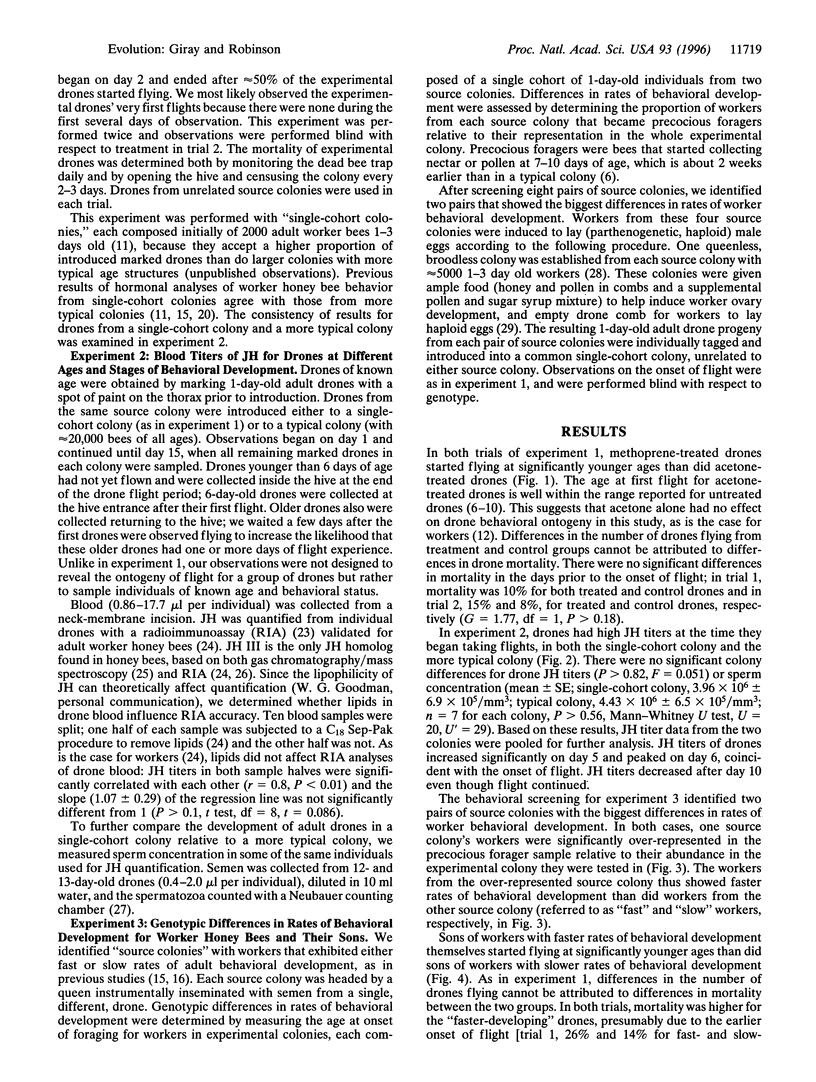
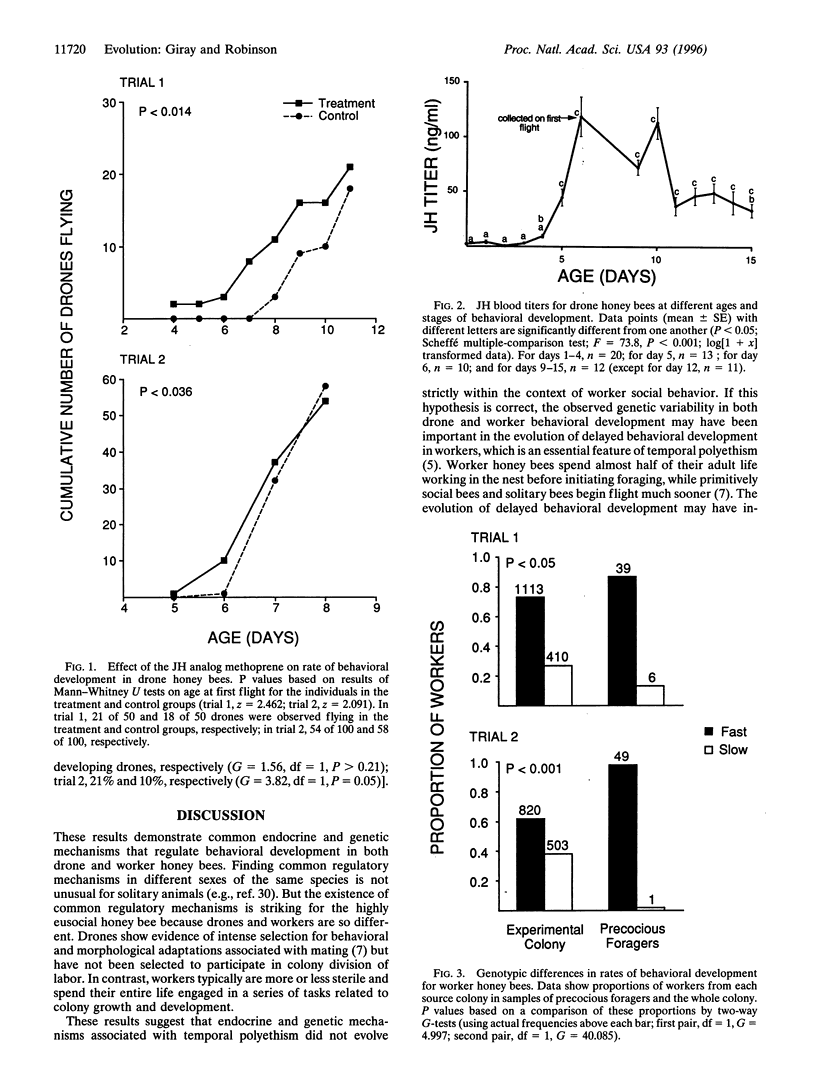
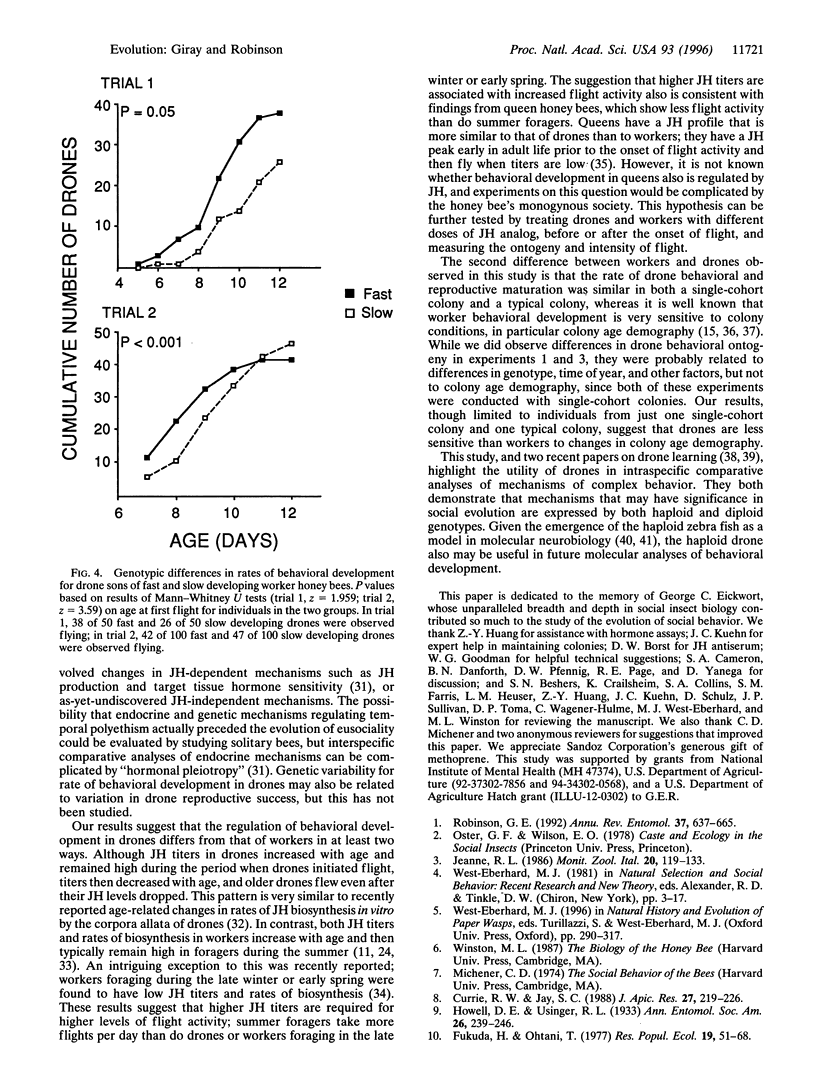
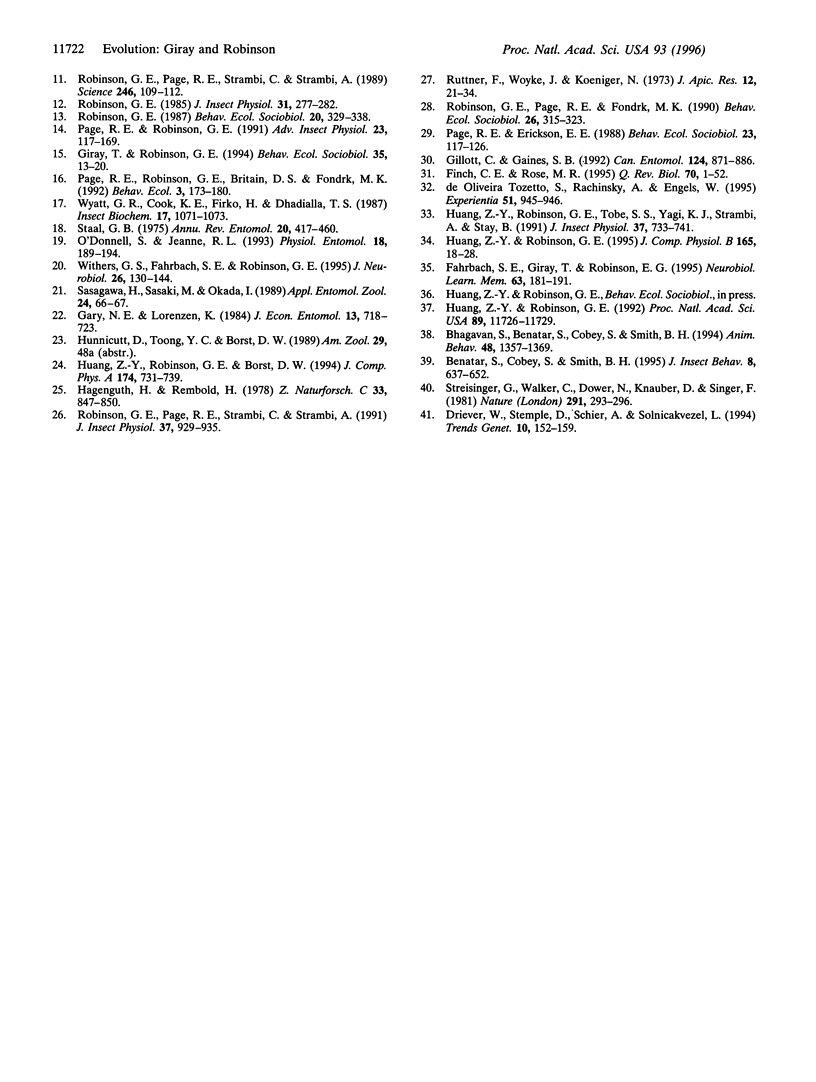
Selected References
These references are in PubMed. This may not be the complete list of references from this article.
- Driever W., Stemple D., Schier A., Solnica-Krezel L. Zebrafish: genetic tools for studying vertebrate development. Trends Genet. 1994 May;10(5):152–159. doi: 10.1016/0168-9525(94)90091-4. [DOI] [PubMed] [Google Scholar]
- Fahrbach S. E., Giray T., Robinson G. E. Volume changes in the mushroom bodies of adult honey bee queens. Neurobiol Learn Mem. 1995 Mar;63(2):181–191. doi: 10.1006/nlme.1995.1019. [DOI] [PubMed] [Google Scholar]
- Finch C. E., Rose M. R. Hormones and the physiological architecture of life history evolution. Q Rev Biol. 1995 Mar;70(1):1–52. doi: 10.1086/418864. [DOI] [PubMed] [Google Scholar]
- Huang Z. Y., Robinson G. E., Borst D. W. Physiological correlates of division of labor among similarly aged honey bees. J Comp Physiol A. 1994 Jun;174(6):731–739. doi: 10.1007/BF00192722. [DOI] [PubMed] [Google Scholar]
- Huang Z. Y., Robinson G. E. Honeybee colony integration: worker-worker interactions mediate hormonally regulated plasticity in division of labor. Proc Natl Acad Sci U S A. 1992 Dec 15;89(24):11726–11729. doi: 10.1073/pnas.89.24.11726. [DOI] [PMC free article] [PubMed] [Google Scholar]
- Huang Z. Y., Robinson G. E. Seasonal changes in juvenile hormone titers and rates of biosynthesis in honey bees. J Comp Physiol B. 1995;165(1):18–28. doi: 10.1007/BF00264682. [DOI] [PubMed] [Google Scholar]
- Robinson G. E., Page R. E., Jr, Strambi C., Strambi A. Hormonal and genetic control of behavioral integration in honey bee colonies. Science. 1989 Oct 6;246(4926):109–112. doi: 10.1126/science.246.4926.109. [DOI] [PubMed] [Google Scholar]
- Robinson G. E. Regulation of division of labor in insect societies. Annu Rev Entomol. 1992;37:637–665. doi: 10.1146/annurev.en.37.010192.003225. [DOI] [PubMed] [Google Scholar]
- Staal G. B. Insect growth regulators with juvenile hormone activity. Annu Rev Entomol. 1975;20:417–460. doi: 10.1146/annurev.en.20.010175.002221. [DOI] [PubMed] [Google Scholar]
- Streisinger G., Walker C., Dower N., Knauber D., Singer F. Production of clones of homozygous diploid zebra fish (Brachydanio rerio). Nature. 1981 May 28;291(5813):293–296. doi: 10.1038/291293a0. [DOI] [PubMed] [Google Scholar]
- Withers G. S., Fahrbach S. E., Robinson G. E. Effects of experience and juvenile hormone on the organization of the mushroom bodies of honey bees. J Neurobiol. 1995 Jan;26(1):130–144. doi: 10.1002/neu.480260111. [DOI] [PubMed] [Google Scholar]


